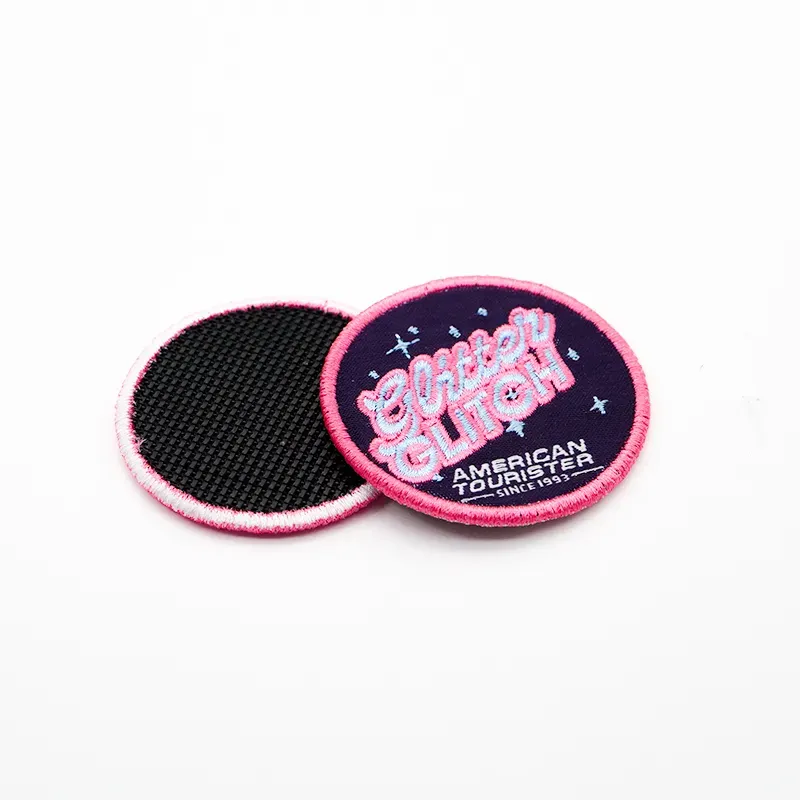No mundo dos remendos e fechos, o termo remendo de velcro surge frequentemente, especialmente em comunidades de equipamentos militares, táticos e para atividades ao ar livre. Mas o que exatamente é um remendo de velcro, e por que é tão amplamente utilizado? Este artigo aborda os fundamentos deste inovador sistema de fixação, seus componentes, vantagens e usos comuns.

O que é um patch de velcro?
UM remendo de velcro é um remendo de tecido que usa o sistema de fixação de velcro—mais comumente conhecido pela marca Velcro—para fixar de forma segura e removível em superfícies compatíveis.
O patch normalmente consiste em duas partes:
- Lado do gancho: Possui ganchos pequenos e rígidos que se prendem na lateral da alça.
- Lado do laço: Possui laços macios e felpudos que prendem os ganchos.
Quando pressionados juntos, esses lados criam uma ligação forte que mantém o adesivo no lugar, mas pode ser removido e recolocado várias vezes sem danos.

Como funciona o sistema de gancho e laço?
Inventado na década de 1940 e popularizado como velcro na década de 1950, esse sistema de fixação imita a forma natural como as rebarbas se prendem às roupas. Os ganchos se prendem às alças, criando um fecho durável e ajustável.
For remendos de velcroOs fabricantes costuram ou colam um lado (geralmente o gancho) na vestimenta, colete ou equipamento, enquanto o remendo carrega o lado oposto (laçada). Isso permite que o remendo seja facilmente trocado ou removido sem costura ou adesivos.
Vantagens dos adesivos de velcro
✅ Fácil de colocar e remover
Ideal para uniformes ou equipamentos onde os patches precisam de atualização ou troca frequente.
✅ Reutilizável
Ao contrário dos remendos costurados, os remendos de velcro podem ser movidos ou substituídos sem danos.
✅ Durável
Os adesivos de velcro de alta qualidade são resistentes a condições externas, lavagens e uso intenso.
✅ Personalizável
Disponível em vários tamanhos, formatos e materiais, incluindo designs bordados, de PVC e tecidos.
Usos comuns de adesivos de velcro
- Uniformes militares e policiais: Exiba nomes, patentes e insígnias de unidades que podem ser alterados conforme necessário.
- Equipamento tático: Patches em mochilas, coletes e chapéus para rápida identificação.
- Vestuário esportivo e para atividades ao ar livre: Logotipos ou emblemas de equipe removíveis.
- Produtos promocionais: Patches intercambiáveis para eventos e campanhas de marketing.

Como escolher o patch de velcro certo
- Identifique o lado do gancho e o lado do laço
Geralmente, o lado áspero do gancho é costurado na peça de base, e o lado mais macio do laço fica no remendo. - Selecione o tipo de material
Os adesivos bordados de velcro oferecem um visual clássico, enquanto as versões em PVC ou borracha acrescentam durabilidade e resistência à água. - Verifique a resistência do suporte
Certifique-se de que o adesivo ou a costura que prende o gancho/laço ao tecido seja forte o suficiente para sua aplicação. - Considere o tamanho e a forma
Escolha dimensões e contornos que se ajustem ao posicionamento do seu equipamento ou uniforme.
Dicas para manter patches de velcro
- Limpe as superfícies do velcro regularmente para remover fiapos e sujeira e obter um poder de colagem ideal.
- Evite altas temperaturas ou ciclos de lavagem agressivos que podem prejudicar a resistência do velcro.
- Guarde os remendos adequadamente para evitar que os ganchos prendam tecidos indesejados.
Conclusão: Versátil e prático – O patch de velcro
Entendimento o que é um patch de velcro revela por que esse método de fixação simples, porém eficaz, domina diversos setores — de uniformes militares à moda casual. Sua facilidade de uso, durabilidade e opções de personalização o tornam a melhor escolha para quem precisa de adesivos removíveis e reutilizáveis.
Explorar personalizado remendos de velcro para adicionar flexibilidade e profissionalismo ao seu vestuário e equipamento hoje mesmo.



